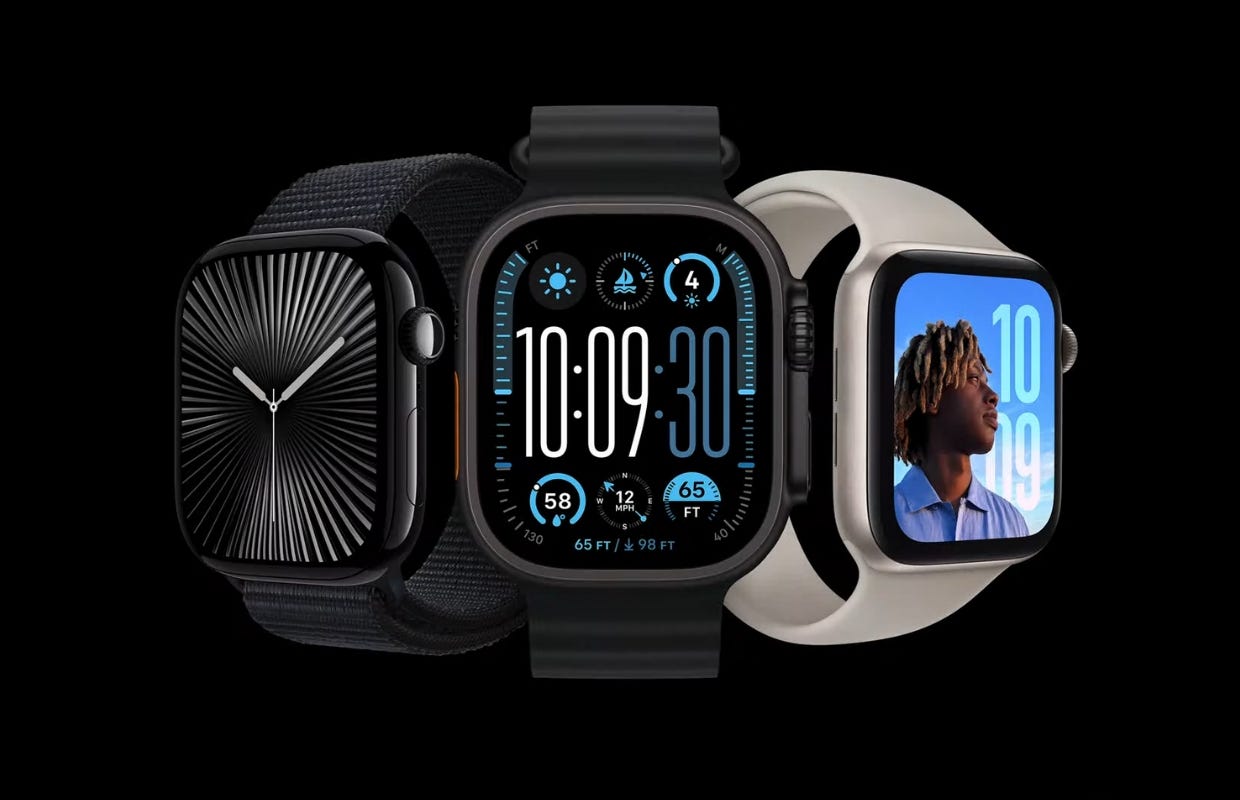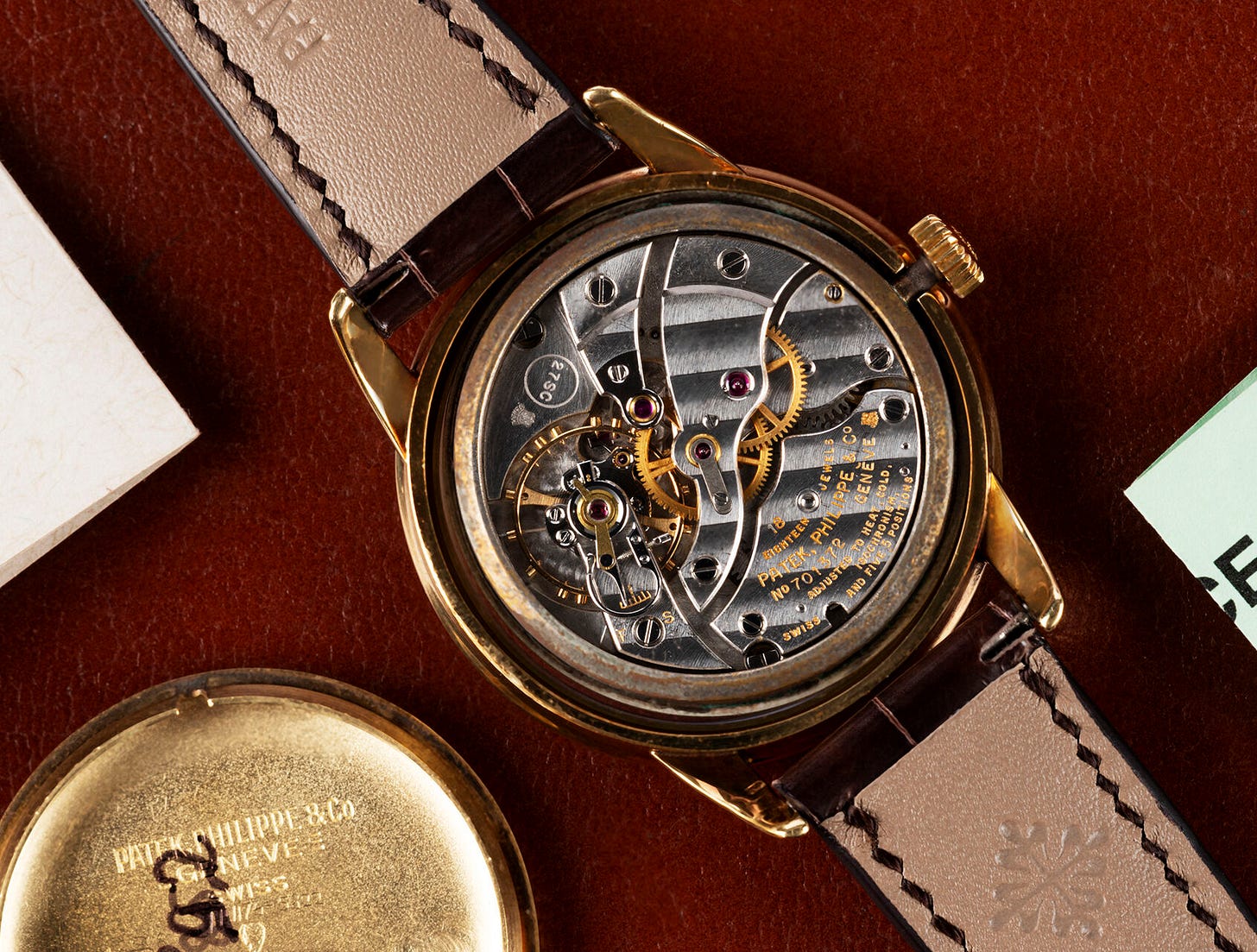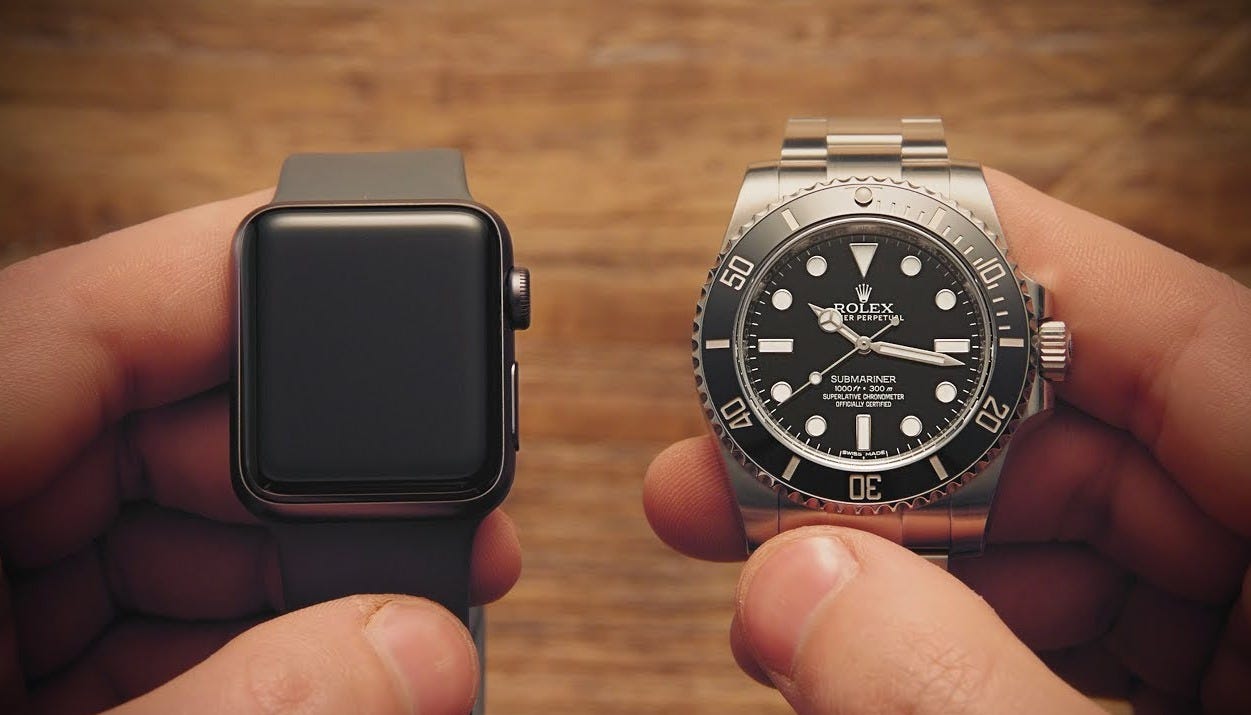Are Smartwatches Killing the Mechanical Watch?
Timepiece Digest – April 17th 2025
Dearest Guardians of Time,
Welcome to the latest dispatch from Timepiece Digest, your exclusive portal into the world of haute horology, where craftsmanship reigns supreme and every tick tells a story. Today, we confront a question that has set tongues wagging in the salons of Geneva and the auction houses of New York: Are Smartwatches Killing the Mechanical Watch?
The Smartwatch Surge: A Tech Tsunami or a Passing Fad?
In the glittering world of 2025, smartwatches have stormed the wrist like a Silicon Valley startup crashing a Swiss chalet. The global smartwatch market is a formidable $40 billion colossus, projected to grow at a breathless 15% CAGR through 2032, according to Fortune Business Insights. With 218.99 million units expected to ship this year alone (Mordor Intelligence), these digital darlings—led by Apple, Samsung, and Garmin—are the darlings of the tech-savvy. They buzz with notifications, track your morning jog, and might even save your life with an ECG. Why, the Apple Watch alone generated $39.8 billion in 2023, and 88% of users swear by its fitness prowess (Demandsage).
But let’s be frank: a smartwatch is less a timepiece and more a wrist-bound smartphone, demanding daily charging and destined for obsolescence faster than you can say “software update.” It’s the equivalent of trading a vintage Château Lafite for a can of energy drink—functional, yes, but hardly timeless.
The Mechanical Watch: A Legacy Forged in Eternity
Now, let us turn to the true monarchs of the wrist: mechanical watches. These marvels of human ingenuity, powered by intricate gears and springs, command a $64.8 billion market in 2025, growing at a stately 4.6% CAGR through 2034 (GMI Insights). Swiss watch exports, the gold standard of horology, reached 15.3 million units valued at 24.8 billion CHF (roughly $27.5 billion) in 2024 (Federation of the Swiss Watch Industry). Brands like Patek Philippe, Audemars Piguet, and Rolex remain the ultimate symbols of prestige, with models like the Nautilus selling out faster than a private jet to Monaco.
Why do these timepieces endure? They are not mere gadgets but heirlooms, investments, and works of art. A well-maintained Patek can outlast empires, with some models appreciating by 50% or more in the secondary market (Legit Check By Ch). Compare that to a smartwatch, which depreciates faster than a tech stock in a bear market. In 2023, limited-edition mechanical watches saw a 25% surge in demand in emerging markets, driven by eco-conscious collectors who adore their battery-free elegance (GMI Insights). As one WatchUSeek forum member eloquently put it, “They’re JEWELRY. The fact that they tell time is secondary.”
The Grand Duel: Coexistence, Not Conquest
So, are smartwatches the grim reaper of mechanical watches? Hardly. Think of it as a duel between a flashy laser sword and a masterfully forged katana—each has its arena. Smartwatches dominate in sheer volume, with 200 million units flooding wrists annually, but mechanical watches reign supreme in value and prestige. The data is clear: the two markets coexist, serving distinct souls.
The tech enthusiast might sport an Apple Watch for their morning run, but when the gala calls, only a Vacheron Constantin will do. Stephen Pulvirent of Hodinkee sums it up: “I don’t think people buying $50,000 chronographs are swapping them for an Apple Watch.” Indeed, many collectors own both, using smartwatches for utility and mechanical watches for legacy. It’s like owning a Tesla for the commute and a Rolls-Royce for the grand tour.
And let’s talk investment. While smartwatches become landfill fodder in a few years, mechanical watches are the horological equivalent of fine art. A Rolex Daytona might fetch double its retail price at auction, while an Apple Watch Series 5 is already a relic. As WatchBox notes, “Mechanical watches are built to last generations, becoming family heirlooms.”
The Future: A Renaissance Awaits
Looking ahead, the mechanical watch is far from endangered. Like vinyl records in the age of streaming, it’s poised for a renaissance among those who crave authenticity. Brands are innovating, blending tradition with modern flair—think hybrid models or sustainable materials. In 2025, vintage-inspired designs with retro dials and aged leather straps are captivating 40% of Millennials and Gen Z (GMI Insights). The challenge for watchmakers is to keep the flame alive, perhaps with collaborations that marry horology with high culture (imagine a Patek x Hermès masterpiece).
Meanwhile, smartwatches will continue their meteoric rise, but their disposability ensures they’ll never rival the emotional weight of a mechanical heirloom. As Houtman Watches muses, “Mechanical watches still matter because they connect us to a craft that’s timeless.”
Parting Thoughts: Choose Your Legacy
Dear connoisseurs, the smartwatch may buzz and beep, but it’s the mechanical watch that sings with the soul of centuries. Whether you’re eyeing a Lange & Söhne for your collection or simply admiring from afar, rest assured: the mechanical watch is not just surviving—it’s thriving. So, raise a glass of vintage Bordeaux to the artisans who keep time ticking, and let’s continue this journey together.




